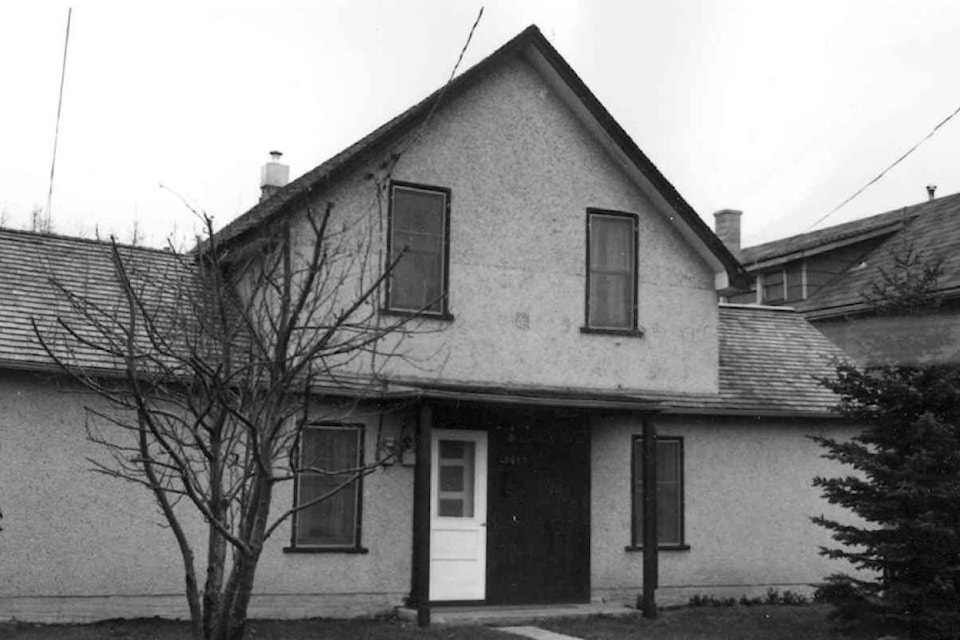History is being made as the COVID-19 coronavirus pandemic sweeps the globe.
It is something that is unprecedented in modern times. Unfortunately, pandemics are not unprecedented. Neither are the use of quarantines and isolation hospitals to attempt to control such devastating illnesses.
In early Western Canada, people were quarantined in their homes, with their families, when they were either ill with a contagious disease, or at risk of coming down with one.
In serious cases, special buildings or tents were used to try and isolate those who had fallen ill, or those who were exposed to infection.
Red Deer got its first formal hospital in 1904, when the Red Deer Memorial Hospital officially opened. It was a modest facility, with initially only 13 patient beds, later expanded to a capacity of 23 patients.
That was adequate in normal times, as Red Deer had a population of between 2,500 and 3,000 people. However, the facility was quickly swamped in times of epidemics. Moreover, there was always the concern that highly contagious patients would soon infect others who had been hospitalized for other reasons.
In 1907, the local medical officer of health, Dr. Henry George, recommended that a quarantine station be created for the more serious contagious patients.
Consequently, the town’s farmers’ market and health committee recommended that $500 be spent to build an “isolation hospital.”
However, such a facility was not built until 1911. It was a very modest building and was located on a corner of the Exhibition Grounds, as they were largely vacant for most of the year.
In 1912, after two smallpox patients had been treated in the isolation hospital, the building was burned to the ground.
A new facility was constructed shortly thereafter, again on the Exhibition Grounds. Around the same time, the Daughters of Wisdom (Filles de la Sagesse) built a small cottage hospital next to St. Joseph Convent. However, it was used almost exclusively for students at the convent who had fallen ill.
Problems arose during the First World War when the Exhibition Grounds were used as a military training camp and the whole site became crowded.
Complications arose when there was an outbreak of fatal typhoid fever in the camp, due to poor water and sanitary conditions. That caused conflicts between the city and the military, since the city had been responsible for the installation of the utilities.
As the war was drawing to a close, the devastating Spanish flu pandemic struck, brought back to North American by soldiers who had caught it along the front in Europe.
The first cases reached Calgary in early October 1918. Despite measures taken to contain the outbreak, it soon spread across the province, with thousands of people becoming ill and hundreds dying.
The local health authorities knew the Memorial Hospital was not large enough or equipped enough to handle the epidemic. The small isolation hospital at the Exhibition Grounds was no longer being used because of its many deficiencies.
Hence, a decision was made to turn the old North-West Mounted Police barracks on Victoria Avenue (43rd Street), north of the Memorial Hospital, into a special isolation hospital for flu victims. Consideration was also given to converting the Alexandra Hotel on Ross Street, which had been closed because of Prohibition, into an auxiliary isolation hospital.
In 1917, the provincial government had turned the old Alberta Ladies College on the East Hill into a special hospital for veterans suffering from shell shock. However, the facility did allow the military some capacity to handle some of the veterans suffering from the Spanish flu.
Nevertheless, the Spanish flu hit Red Deer hard, with literally hundreds of people in the city and surrounding community falling ill. More than 50 people died.
All the health and medical facilities were swamped. The local doctors were driven to exhaustion, with one, Dr. Richard Parson, seeing up to 50 patients a day, many as house calls.
The only time he didn’t see any patients was the day of his wife’s funeral, his wife having succumbed to the flu herself.
By the spring of 1919, the great pandemic had more or less passed. However, the legacy of suffering and hardship lingered for many years.
A new, very modest, isolation facility was built next to the hospital in the early 1920s. Fortunately, it never saw the massive numbers of patients as had been experienced in 1918-19.
Red Deer historian Michael Dawe’s column appears Wednesdays.
